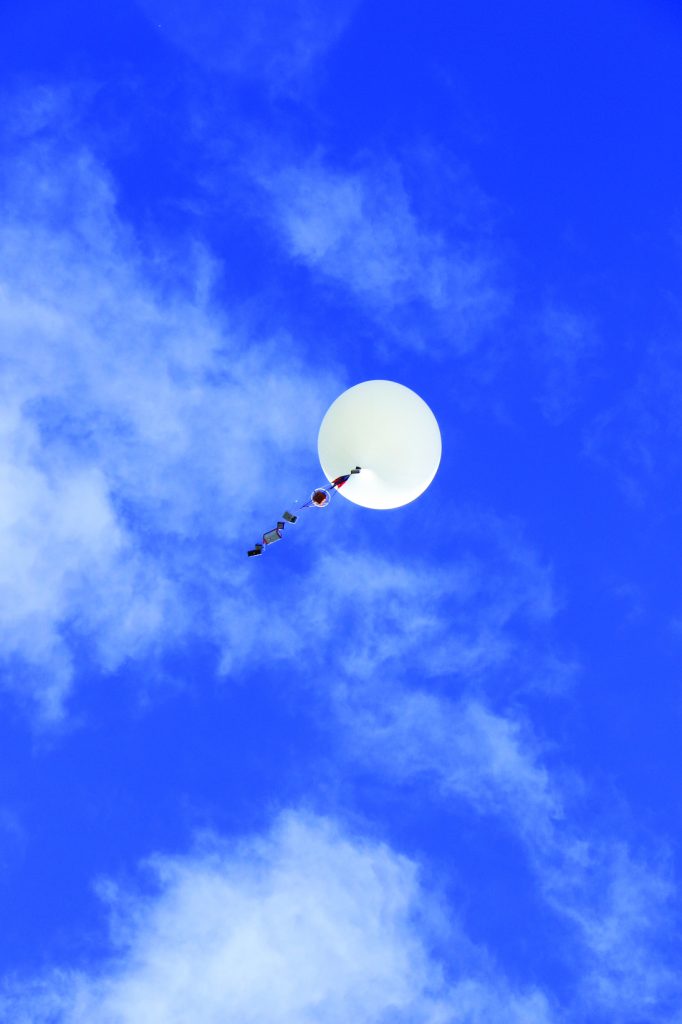
On an overcast day last May, a golfer at Greystone Golf Course in White Hall, Maryland, watched something unexpected falling onto the 18th fairway: a parachuting package filled with cameras, GPS technology, and a miniature computer floating down from the heavens.
The mystery was soon cleared up with the arrival of a student team from Johns Hopkins that had been tracking the device.
The students explained that the package was actually a payload that had been carried to an altitude of 39,055 feet by a giant helium balloon, 10 feet in diameter, during a test flight of the Johns Hopkins Helium Balloon Project.
The project was designed to teach the team—made up of physics, computer science, and biomedical engineering majors —skills in programming, engineering, and problem-solving as they prepared for the launch. While images and atmospheric data were captured during this test flight and others, the learning experience was more about the feat of getting the balloon and the tech in the air than about the data gathered during the journey.
“I knew it was possible to send something really high up and take these amazing pictures of the Earth. I just didn’t know exactly how to achieve it. For students, it’s a fantastic project,” says the Krieger School’s Brice Ménard, associate professor of physics and astronomy, who conceived of the extracurricular project and leads it.
Because a balloon can’t be controlled once it’s in the air, being able to track the device is of the highest priority. Once in flight, the balloon can travel 40 to 60 miles and can reach speeds of 70 miles per hour. One of the greatest challenges was insulating the payload so the technology continued to function in the extreme cold of the high altitude, where temperatures can dip below -50 degrees Fahrenheit, says team member Lisa Zhu, a biomedical engineering major.
The team brainstormed designs capable of carrying and insulating the instruments and capable of performing the necessary functions, like the tracking component. During the brainstorming process, the students filled notebooks and covered the walls and tables of their laboratory with notes and designs before finalizing their balloon device.
On its May test flight, the balloon launched from Frederick, Maryland, and traveled 48 miles northeast to White Hall, where it landed on the golf course. Owing to overcast weather, the team scrapped plans to include a 360-degree camera and a second balloon intended to capture footage of the first balloon popping in the upper atmosphere.
Though not everything had gone according to plan, Ménard said the group’s first official flight was an unqualified success. “Not only did we have a successful launch,” Ménard says, “we got to play a round of golf for free.”




